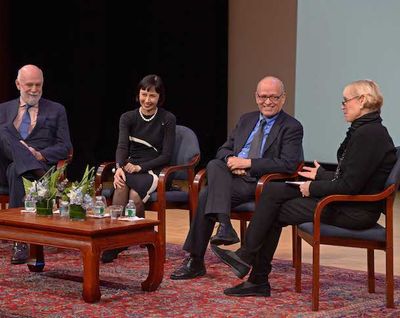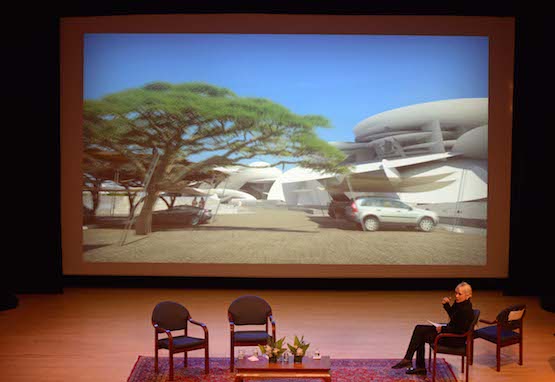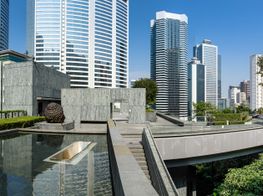If We Build Them, Will You Come?

In 2014, I spent twenty days traveling across central and southern China exploring a cross section of roughly twenty of China’s thousands of new museums. This anomolous ‘museum boom’ has spawned much speculation over the driving factors and futures of this new generation of institutions. It has also catalysed discussion on how these museums can be sustained.
This was one such issue addressed at the Asia Society New York’s first public debate of 2015, a discussion centering on ‘the changing landscape of museums today’. The format was a high profile panel discussion arranged to coincide with the launch of new Asia Society publication 'Making a Museum in the 21st Century'. The discussion was populated by some of the leading institutional museum figures of today, including: Melissa Chiu, director of the Hirschorn Museum and Sculpture Garden, Tom Finkelpearl, commissioner of the New York City Department of Cultural Affairs, and Richard Armstrong, director of the Solomon R. Guggenheim Museum and Foundation. Moderating the panel was Peggy Loar, acting vice president for global arts and culture, and museum director for the Asia Society. Despite a slightly awkward combination of panelists and a few pregnant silences, good discussion was generated around issues vital to the identity of museums in the United States, but also more broadly, the growth of global museum culture.
Quantity and Sustainability
Melissa Chiu dealt with questions about the nature of museums in different places, especially China, where it seems there is a proliferation of private museums without a public agenda, nor planned for in terms of sustainability. Chiu responded by explaining how different the economic environment is. “It is hard to tell. It’s an extraordinary time for China, Shanghai alone has had six new museums open in the last eight months”. China clearly represents an entirely different model, one without the social and philanthropic foundation enjoyed in the West, especially in the States. That said, she admitted that “there are plenty of private museums in the States which haven’t survived throughout the years.”
Melissa Chui. ©Elsa Ruiz/Asia SocietyNo Such thing as Splendid Isolation
Melissa Chui’s concerns regarding sustainability prompted Finkelpearl to also reflect on his own visits to museums in China and the South East Asian region, drawing out a concern about the vital function of communities and cultural precedent for museums. He recalled “I was at museum conference in China, with cities represented which effectively didn’t exist 25 years ago. To weave a museum culture into a brand new city is a completely different challenge which is almost incomprehensible to us in the West”. Finkelpearl also cited a museum and local arts culture course he led out of New York University, specifically for students from Abu Dhabi. In introducing the concept of communities of artists and entire gallery districts, he said it was clear that these things all played an important role in a place where museums are world class and the culture that surrounds them defines the city. “If you are putting a museum down in places which don’t yet have that, it’s very difficult. How do you animate the city in relation to the museum, in a city which doesn’t yet have the roots to support it?”.
Peggy Loar, acting vice president for global arts and culture, and museum director for the Asia Society. ©Elsa Ruiz/Asia SocietyTurning Toward the Audience
Panelists spoke about changes in the museum industry, and the need for museums to orient themselves towards audiences. In an interesting twist to typical discussions on the topic, the importance of architecture to the museum experience was brought up as a way to question priorities. Chui mentioned British architect David Adjaye's argument that walking into the museum has to inform you of what you are seeing in the immediate instance, and related to this Adjaye's belief that the ‘white cube’ is a completely 20th century concept of the museum in need of reappraisal. This was illustrated well by moderator Peggy Loar when she introduced, towards the end of the discussion, a series of artist-rendered images from the visionary new museum in Doha designed by Jean Nouvell—a structure that seems to break every physical museum convention that exists. Loar also raised the idea of cross-pollination of departments to break down barriers, and that this is perhaps required of the next generation of museum professionals in addition to scholarship and other more traditional skills. Richard Armstrong followed this up by saying that “The thing that is most needed now by curators is empathy”.
Richard Armstrong, Melissa Chui, Tom Finkelpearl, Peggy Loar. ©Elsa Ruiz/Asia SocietyGatekeeping through Education
The importance of dedicated education teams came up numerous times in the evening. Commissioner Finkelpearl even went so far as to say that “The ‘avant-garde’ in museums is really shifting to the education department. The gatekeeping strategy in curatorial is how many can you keep out, whereas in education it is how many can you get in, and how many different types. There is a paradigm shift happening in museums.” Richard Armstrong spoke about diversifying exhibition offerings to appeal to broader audiences, as well as a more wholesale acceptance of technology to reach visitors. The discussion was ignited by questions from the floor, with clear concerns for the actuality of ideas regarding accessibility and sustainability. When asked about social justice and entitlement for children in terms of access, Finkelpearl responded that “we get lots of kids, they have access - the question is about life long learning. What connects the kids in east New York to a life long museum experience? They go back to school, they link up with teachers, they make art … it is a fundamental question”. He outlined the New York State budget of US$23 million to ‘infuse’ the school system with art teachers, to facilitate that learning and response. If these teachers are successful in their charge, “there is potential for them to change the entire demographic of museum attendance”.—[O]
Making a Museum in the 21st Century contains essays with contributions by Caroline Collier, Director, Tate National, London; Glenn Lowry, Director, The Museum of Modern Art, New York; Lars Nittve, Exceutive Direcotr, M+, Hong Kong; and Melissa Chiu, who also served as editor.


















































































































































































